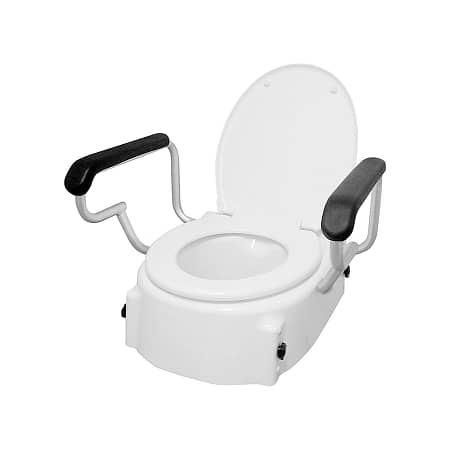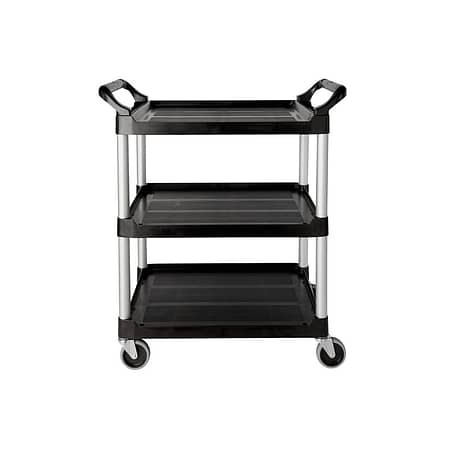Pressure care, a critical aspect of healthcare, plays a vital role in enhancing patient outcomes and preventing pressure injuries, a common yet severe issue in various healthcare settings. Effective pressure care practices are crucial for patients, especially those with limited mobility, as they significantly reduce the risk of developing pressure ulcers, which can lead to complications, extended hospital stays, and increased healthcare costs.
The Significance of Pressure Care Across Healthcare Environments
Pressure care is essential across all healthcare environments, from acute hospital settings to long-term care facilities and home care. It is a fundamental component of patient care that directly impacts patient recovery, quality of life, and overall healthcare outcomes. Implementing effective pressure care strategies prevents pressure injuries, thereby improving patient comfort, speeding up recovery, and reducing the burden on healthcare systems.
Pressure Care in Hospital Settings
Hospital settings pose unique challenges for pressure care due to the acute conditions of patients and the complexity of their care needs.
Challenges and Solutions
Challenges: Hospitals face specific challenges in providing effective pressure care, including:
- Managing patients with varying degrees of mobility and health conditions.
- The need for specialized pressure-relieving equipment.
- Ensuring all staff are adequately trained in pressure care techniques.
Solutions: Addressing these challenges involves:
- Conducting regular patient assessments to identify those at risk of developing pressure injuries.
- Utilizing a range of pressure-relieving devices, such as specialized mattresses and cushions, tailored to individual patient needs.
- Implementing comprehensive staff education programs to ensure all healthcare providers are proficient in pressure care practices.
Best Practices for Hospital-Based Pressure Care
Effective pressure care in hospital settings includes:
- Regular Repositioning: Implementing a schedule for regular patient repositioning to alleviate pressure on vulnerable areas.
- Skin Integrity Checks: Conducting daily skin assessments for early detection of potential pressure injuries.
- Interdisciplinary Care Plans: Developing personalized care plans involving an interdisciplinary team to address all aspects of a patient’s pressure care needs.
Pressure Care in Long-term Care Facilities
Long-term care facilities, catering to residents with chronic conditions and limited mobility, require tailored pressure care protocols.
Implementing Effective Pressure Care Protocols
Developing and implementing pressure care protocols in long-term care facilities involves:
- Assessing the risk of pressure injuries for all residents upon admission and periodically thereafter.
- Creating individualized care plans that include regular skin assessments, pressure redistribution techniques, and appropriate use of pressure-relieving aids.
Engaging Caregivers and Staff
Ensuring effective pressure care in long-term care facilities also requires:
- Comprehensive Training: Providing ongoing training for caregivers and staff on the latest pressure care techniques and technologies.
- Empowerment and Involvement: Encouraging staff to take proactive roles in pressure care management and to contribute to continuous improvement efforts in care practices.
Managing Pressure Care at Home

Providing effective pressure care at home presents unique challenges and requires careful planning, especially when it comes to selecting the right equipment and ensuring caregivers are well-informed and supported.
Home Care Challenges and Equipment Needs
Challenges: Caregivers at home might face several obstacles, including:
- Limited knowledge of pressure care techniques and best practices.
- Financial constraints in acquiring specialized pressure care equipment.
- The physical and emotional toll of providing round-the-clock care.
Equipment Needs: Essential pressure care equipment for home settings includes:
- Pressure-Relieving Mattresses and Overlays: These reduce pressure on vulnerable body areas and are crucial for individuals spending extended periods in bed.
- Specialized Cushions: For wheelchair users, cushions designed to redistribute pressure are vital in preventing pressure injuries.
- Skin Care Products: Quality moisturizers and barrier creams help maintain skin integrity, an essential aspect of pressure care.
Educational Resources and Support for Home Caregivers
Resources: Various resources are available to support home caregivers in pressure care management, including:
- Online Training Programs: Websites and online platforms offer free or paid courses on pressure care techniques.
- Support Networks: Online forums and local support groups provide platforms for caregivers to share experiences and advice.
- Healthcare Professional Guidance: Regular consultations with healthcare professionals can offer personalized advice and adjustments to care plans.
Integrating Technology and Innovations

The integration of technology into pressure care represents a significant advancement, offering new tools for monitoring and prevention that were previously unavailable in home settings.
Technological Advances in Pressure Care
Recent innovations include:
- Smart Mattresses and Overlays: Equipped with sensors to monitor pressure distribution and adjust automatically to minimize pressure points.
- Wearable Sensors: Devices worn by the patient that track skin temperature and moisture levels, indicators of potential pressure injury development.
- Telehealth Services: Allow for remote monitoring and consultations, providing caregivers with access to professional advice and support.
Adopting Technology for Improved Care
Integration Process: Incorporating these technologies into home care routines involves:
- Assessment and Selection: Evaluating the patient’s specific needs and selecting appropriate technological solutions.
- Education and Training: Caregivers need to be trained on how to use and maintain new devices effectively.
- Regular Evaluation: Continuous assessment of the technology’s impact on the patient’s care, adjusting the care plan as necessary.
Collaboration and Multidisciplinary Approaches

Effective pressure care management transcends individual efforts, requiring a coordinated approach that leverages the expertise of various healthcare professionals. This collaborative strategy ensures that all aspects of a patient’s care are addressed comprehensively.
The Role of Multidisciplinary Teams
Importance of Collaboration: A multidisciplinary team approach is vital in pressure care for several reasons:
- Holistic Care: It allows for the provision of holistic care that addresses not just the physical aspects of pressure injury prevention and management but also the psychological, nutritional, and rehabilitation needs of the patient.
- Expertise Sharing: Different professionals bring specialized knowledge and skills, offering a broader range of interventions and strategies to prevent and treat pressure injuries.
- Enhanced Communication: Regular meetings and discussions among team members facilitate better planning, problem-solving, and adjustments to care plans, ensuring all team members are aligned in their approach.
Team members typically include nurses, doctors, physical therapists, dietitians, and occupational therapists, each playing a crucial role in assessing risk factors, implementing prevention strategies, and managing existing pressure injuries.
Management and Individual Care Plans
Personalized Care Plans: The development of individualized care plans is a cornerstone of effective pressure care, involving:
- Risk Assessment: Comprehensive assessment of the patient’s risk for developing pressure injuries using validated tools.
- Goal Setting: Establishment of clear, achievable goals based on the patient’s condition and overall health status.
- Intervention Strategies: Selection of specific interventions, including repositioning schedules, skin care routines, nutritional support, and use of pressure-relieving devices.
- Regular Review: Continuous evaluation and adjustment of the care plan based on the patient’s response to interventions and changing needs.
This personalized approach ensures that care is tailored to the unique needs of each patient, maximizing the effectiveness of pressure care strategies.
Conclusion
Pressure care is an ever-evolving field, with continuous advancements in technology, treatment modalities, and care strategies. The future of pressure care lies in the adoption of innovative solutions, ongoing education, and a steadfast commitment to multidisciplinary collaboration. As practices evolve, the focus remains on improving patient outcomes, enhancing the quality of life for those at risk of or living with pressure injuries, and ultimately, preventing these injuries wherever possible.

























